Best Practices for Frontend Development in MERN Stack
Discuss best practices, coding conventions, and tools for frontend development in the MERN stack, focusing on topics like component structure, state management, and performance optimization.
In today's digital era, frontend development plays a crucial role in creating engaging and user-friendly web applications. One of the most popular and powerful technology stacks for building web applications is the MERN stack, which stands for MongoDB, Express.js, React, and Node.js. With its robust capabilities and wide community support, the MERN stack has gained immense popularity among developers worldwide.
In this blog, we will explore the best practices for frontend development in the MERN stack that can help businesses enhance their development process and create exceptional user experiences.
![[object Object]](https://clipl-web1.sgp1.cdn.digitaloceanspaces.com/images/clu85letv00534irzg11i1avz.png)
- Structured Project Organization: Maintaining a well-structured project organization is essential for frontend development in the MERN stack. Consider following a modular approach, where you break down your project into reusable components, making it easier to manage and maintain the codebase. Use tools like create-react-app or Next.js to set up the initial project structure efficiently.
- Component-Based Architecture: In React, a component-based architecture is highly recommended. Divide your application into smaller, reusable components that encapsulate specific functionalities. This approach improves code reusability, scalability, and maintainability. Additionally, utilizing libraries such as Material-UI or Bootstrap can provide pre-built components, ensuring consistency and saving development time.
- Responsive Design: With the increasing use of mobile devices, responsive design has become a necessity. Ensure your frontend application is responsive and optimized for various screen sizes. Use CSS media queries and responsive design frameworks like Bootstrap or Tailwind CSS to create a seamless experience across different devices.
- Efficient State Management: In a complex frontend application, managing state becomes crucial. Leveraging state management libraries like Redux or MobX can help you efficiently manage and share state across components. Properly organizing and structuring your state can prevent data inconsistencies and make debugging easier.
- Code Quality and Linting: Maintaining a high code quality is essential for efficient frontend development. Utilize tools such as ESLint and Prettier to enforce coding standards, catch potential errors, and maintain a consistent coding style across your team. Integrating code formatters and linters into your development workflow ensures clean and readable code.
![[object Object]](https://clipl-web1.sgp1.cdn.digitaloceanspaces.com/images/clu85gka7004r4irzd91c371v.png)
- Performance Optimization: Optimizing frontend performance is crucial for providing a smooth user experience. Minify and compress your JavaScript and CSS files to reduce loading times. Use lazy loading techniques to load resources only when needed. Employ performance monitoring tools like Lighthouse or Webpage Test to identify bottlenecks and optimize your application's performance.
- Testing and Automation: Implementing a comprehensive testing strategy is vital for frontend development in the MERN stack. Write unit tests for your components and integrate end-to-end testing using tools like Jest and React Testing Library. Automate your tests using continuous integration and deployment (CI/CD) pipelines to catch issues early and ensure code stability.
- Accessibility: Building accessible web applications is essential to ensure inclusivity. Follow the Web Content Accessibility Guidelines (WCAG) to make your frontend application usable by individuals with disabilities. Consider using ARIA attributes, providing alternative text for images, and making your application keyboard navigable.
- Security Considerations: Protecting your frontend application against security threats is crucial for business development. Follow secure coding practices, implement proper authentication and authorization mechanisms, and sanitize user inputs to prevent common vulnerabilities like cross-site scripting (XSS) or SQL injection attacks. Stay updated with the latest security patches and conduct regular security audits.
- Documentation and Collaboration: Maintaining clear and up-to-date documentation is essential for effective collaboration within your team. Document your project structure, component APIs, and guidelines for code contributions. Utilize collaboration tools like Git and platforms like GitHub or GitLab to manage your codebase, track issues, and facilitate smooth collaboration among developers.
Frontend development in the MERN stack offers a powerful and versatile approach to building modern web applications. By implementing these best practices, businesses can streamline their development process, create exceptional user experiences, and stay ahead in the competitive digital landscape. Embrace these practices, stay updated with the latest frontend technologies, and leverage the vast MERN stack ecosystem to build innovative and successful web applications.
























